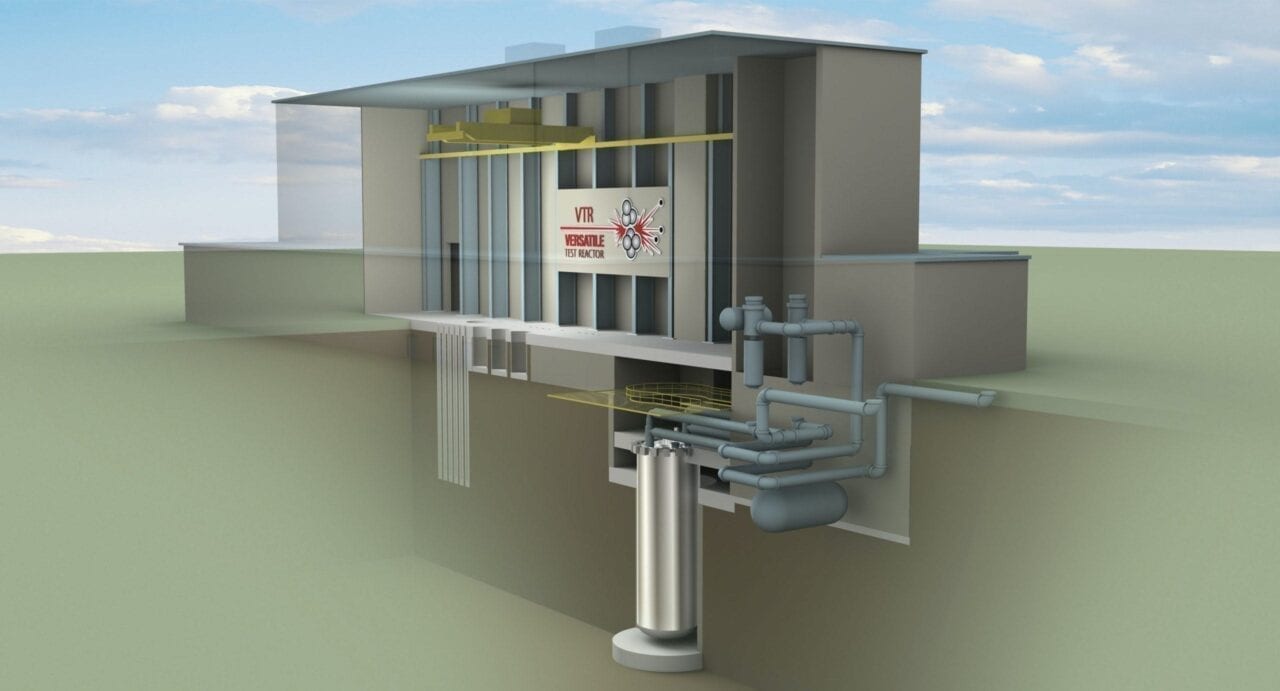Versatile Test Reactor Moves into Engineering Design Phase
The post Versatile Test Reactor Moves into Engineering Design Phase appeared first on POWER Magazine.

The Versatile Test Reactor (VTR), a planned experimental fast neutron reactor that the Department of Energy (DOE) says is crucial to support domestic advanced nuclear reactor research and development has cleared Critical Decision 1," paving the way for the engineering design phase to begin.
Critical Decision 1-also known as Approve Alternative Selection and Cost Range"-is the second step in a formal process the DOE uses to review and manage research infrastructure projects. The VTR cleared Critical Decision 0, the first approval required by DOE Order 413.3B in February 2019. To pass Critical Decision 0, a project must demonstrate a mission need" requiring investment.
As part of Critical Decision 1, federal committees reviewed the conceptual design, schedule, and cost range and analyzed potential alternatives. DOE also issued a Notice of Intent to prepare the Environmental Impact Statement (EIS) for the VTR, which was published in the Federal Register on August 5, 2019, as part of Critical Decision 1 activities," the DOE said on Sept. 23.
The DOE said it plans to make a final decision on the design, technology selection, and location for the VTR following the completion of the EIS and Record of Decision, which is expected in late 2021.
The long-awaited Critical Decision 1 is a notable milestone for the VTR program, which the DOE conceived in February 2017, but formally launched in 2018, after Congress passed the Nuclear Energy Innovation Capabilities Act (NEICA). The law highlighted the need for a reactor-based fast-neutron source to keep the U.S. technologically competitive with China and Russia.
Since then, a team of experts from six national laboratories, 19 universities, and nine industry partners have been developing a design, cost estimate, and schedule for the VTR. The national laboratories include Idaho National Laboratory (INL), Argonne National Laboratory, Los Alamos National Laboratory, Oak Ridge National Laboratory, Pacific Northwest National Laboratory, and Savannah River National Laboratory. GE Hitachi (GEH) and Bechtel National joined forces in November 2019 to provide the conceptual design for the VTR project that featured GEH's PRISM technology. GEH and TerraPower, notably, are also part of a team led by Bechtel that was recently selected by Battelle Energy Alliance (BEA) to spearhead the design and build phase of the VTR, but negotiations on that contract are ongoing.
As Kemal Pasamehmetoglu, executive director of the VTR project, told POWER earlier this month that the unique test reactor will likely be a 300-MWth sodium-cooled pool-type fast reactor based on the PRISM design that will use fuels with metallic alloys, including high-assay low-enriched uranium fuel.
While the DOE wants the facility to be operational by 2026, Pasamehmetoglu noted that the project's timely completion hinges on Congressional appropriations. However, the $295 million requested by the DOE in FY2021 to kick off the project remains uncertain. Funding delays could push the project's completion to the late 2020s, he said, and that would in turn pose a significant hurdle for an array of advanced nuclear developers that are banking on the facility to commercialize their technologies in the late 2020s.
The VTR's urgency is highlighted by an Advanced Reactor Demonstration Program (ARDP) funding award opportunity (FOA) released by the DOE this May to provide $160 million to industry in the first year of funding for the construction of two reactors that can be operational within the next five to seven years. The period to submit applications for the FOA closed on Aug. 19, and a selection of the demonstration pathway award (or awards) is likely in October 2020.
The only viability for testing fast spectrum irradiation currently accessible to U.S. companies is the BOR-60 reactor in the Russian Federation," which is problematic from several standpoints, including export control concerns for materials and fuels testing, intellectual property rights, quality assurance, and transportation issues, Pasamehmetoglu noted.
Existing test reactors, like the Advanced Test Reactor at Idaho National Laboratory and the High Flux Isotope Reactor at Oak Ridge National Laboratory, are thermal neutron reactors and are not capable of sustaining neutrons at concentrations and speeds high enough to perform accelerated testing of innovative nuclear technologies under development," he said.
Last year, the DOE estimated the VTR could cost $3 billion to $6 billion, based on similar projects. The updated cost range associated with Critical Decision 1 is now $2.6 to $5.8 billion.
-Sonal Patel is a POWER senior associate editor (@sonalcpatel, @POWERmagazine).
The post Versatile Test Reactor Moves into Engineering Design Phase appeared first on POWER Magazine.